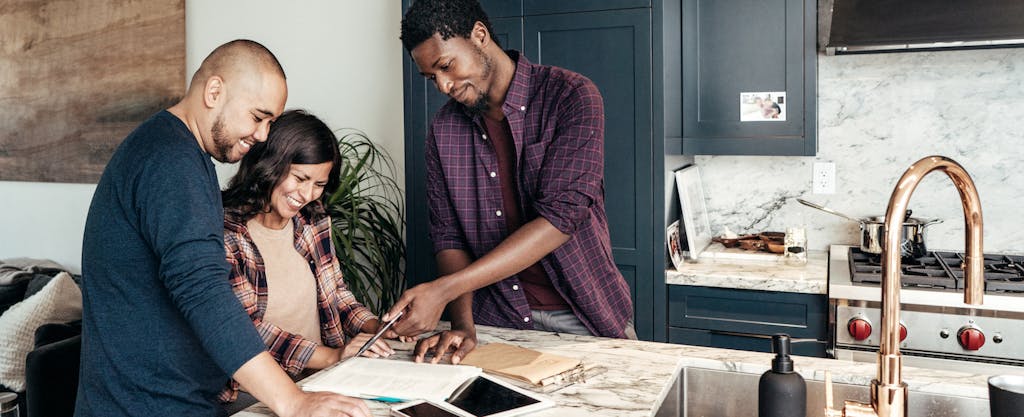In a Nutshell
A second mortgage is one way to access some of your home's equity to help you achieve your financial goals.A second mortgage often comes in the form of a home equity loan or line of credit that you can take out in addition to your property’s primary mortgage loan.
But there are several things you’ll want to consider before you borrow against the value of your home.
- What is a second mortgage and how does it work?
- Is a second mortgage a refinance loan?
- What can I use a second mortgage for?
- Pros and cons of a second mortgage
What is a second mortgage and how does it work?
A second mortgage is a loan or line of credit that you take out using your home as collateral. The loan is separate from your primary mortgage loan, which is what you used to purchase the property in the first place.
A second mortgage often allows you to use your home equity, which is the difference between the market value of your home and how much you owe on your mortgage loan.
A home equity loan is an installment loan that typically provides you with a lump-sum payment in exchange for regular monthly payments for a fixed period of time.
With a HELOC, or home equity line of credit, you can get access to a revolving credit account, which works similarly to a credit card. You can borrow money, pay it back and borrow it again. You only have to pay interest on the amount you actually borrow.
HELOCs typically have a draw period, during which you can withdraw money from your credit line and make interest-only payments. Then, there’s a repayment period, during which you typically pay back your balance in regular installments.
You can use a second mortgage for pretty much anything, and interest rates are generally lower than what you’d find with an unsecured personal loan or credit card because the debt is secured by your home.
Keep in mind that lenders may limit the percentage of your equity that you can borrow against. The more of your equity that you borrow against, the higher your chances of being underwater on your mortgage if home prices go down in your area.
Is a second mortgage a refinance loan?
A second mortgage and a refinance loan are two different types of loans.
With a second mortgage, you’re adding an additional lien to your home. In contrast, a refinance loan pays off your primary mortgage loan and replaces it with a new one.
Plus, a second mortgage is subordinate to your primary home loan. That means if you refinance your primary mortgage loan, that loan takes precedence over a home equity loan or HELOC in the event that you default on your debt, and the lender forecloses on the property.
The lender with the second mortgage may still get repaid, but only if there’s enough left after the primary mortgage is satisfied.
What can I use a second mortgage for?
You can use a second mortgage for just about anything, including home renovations, debt consolidation, large purchases and more.
However you’re thinking about using your loan funds, you’ll want to carefully consider the costs and other potential drawbacks to determine if it’s the right decision.
Pros and cons of a second mortgage
There are several reasons to consider taking out a second mortgage on your home, but there are also some potential pitfalls to watch out for.
Pros
- Low interest rates: Because the loan or line of credit is secured by your home, you may qualify for lower interest rates than you’d get for unsecured personal loans or credit cards. Just be sure to read the fine print. Some HELOCs, for example, feature a low introductory rate that is subject to an adjustment later on.
- Flexible uses: You’re generally not limited in how you can use your loan funds, giving you a lot of flexibility to work toward your financial goals.
- Potential for high loan amounts: The amount you can borrow depends on your finances, the lender and how much equity you have. But if you have a lot of equity in your home, you may be able to borrow more than you could with other financing options.
Cons
- More to pay: While interest rates can be low, your total cost of borrowing may be more than you think. HELOCs, for example, may come with closing costs, and you may need to pay an annual fee. In general, having two mortgage payments to make may be challenging all by itself depending on your circumstances.
- Adjustable rates: You may find that certain second mortgages like HELOCs feature adjustable rates rather than fixed rates — an important issue to be aware of when considering these options.
- Defaulting could cause you to lose your home: Because you’re using your home as collateral for your second mortgage, you could put your home at risk if you can’t make your payments. Think carefully about adding a second mortgage payment to your budget and how it might affect your ability to meet your obligations.
Next steps
If you’re considering a second mortgage, take some time first to compare it with other options you might have for financing. While a personal loan or credit card may be generally more expensive, unsecured debt means you won’t have to worry about losing your home as a direct consequence of failing to pay.
If you’ve decided a second mortgage is right for you, compare home equity loans and HELOCs to determine the right fit for your needs. Then, take some to shop around and compare rates from multiple lenders before submitting an application.
In addition to interest rates, also consider closing costs, ongoing fees, loan-to-value limits and other factors to find the best potential fit for you.


